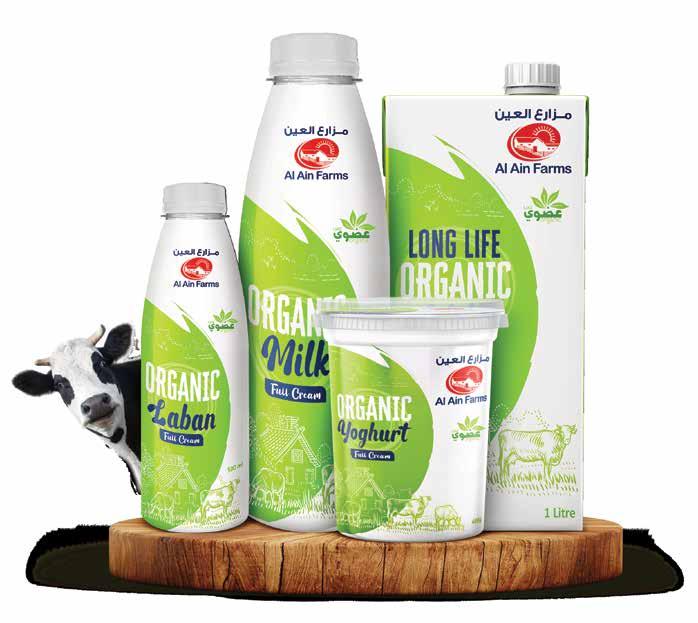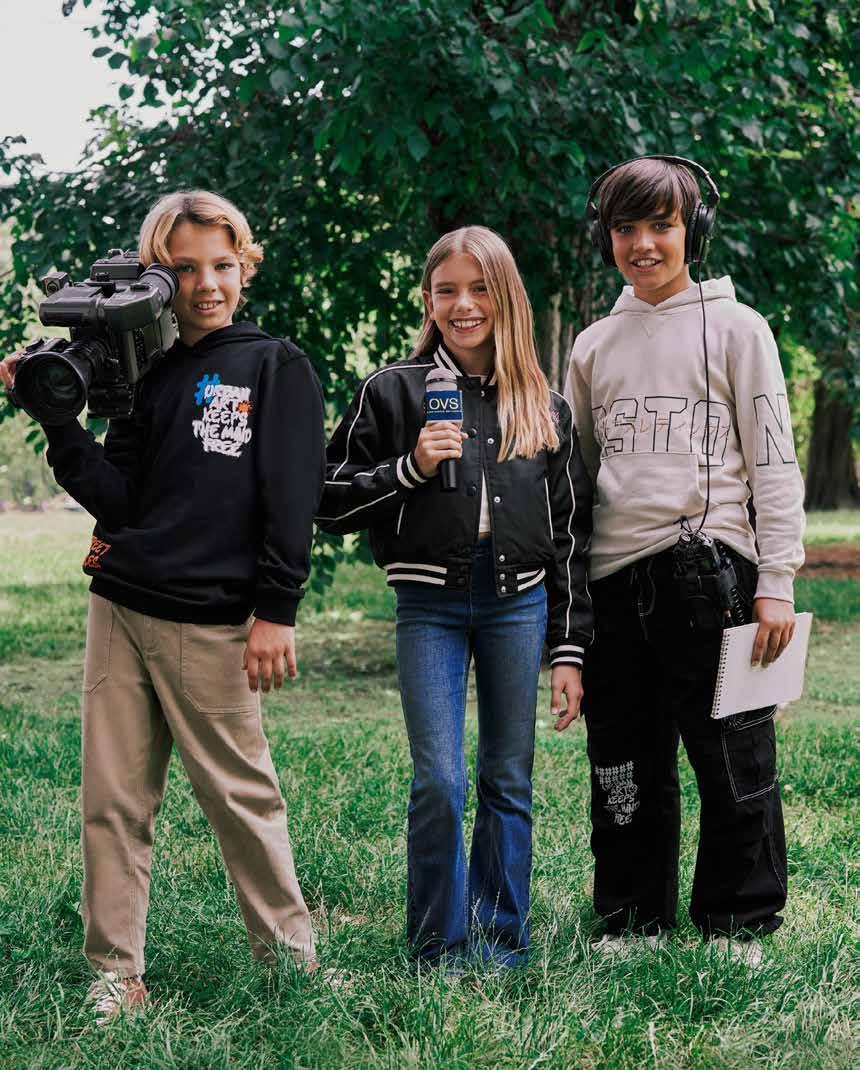BUILDING CONFIDENCE IN SHY KIDS
HOW TO STOP
WASTING FOOD AT HOME
MANAGING VARICOSE VEINS IN PREGNANCY
WHY MINDFULNESS IN EARLY YEARS MATTERS
THE SECRET TO TEACHING GOOD TABLE MANNERS


BUILDING CONFIDENCE IN SHY KIDS
HOW TO STOP
WASTING FOOD AT HOME
MANAGING VARICOSE VEINS IN PREGNANCY
WHY MINDFULNESS IN EARLY YEARS MATTERS
THE SECRET TO TEACHING GOOD TABLE MANNERS


EDITORIAL
EDITOR: Ella Naseeb Ryan ella.ryan@cpimediagroup.com
ADVERTISING & SPONSORSHIPS
Mathew Tharakan
mathew.tharakan@cpimediagroup.com 05 05 34 95 94
Kay Marham
kay.marham@cpimediagroup.com 05 67 68 62 68
MARKETING marketing@cpimediagroup.com
DISTRIBUTION & SUBSCRIPTIONS info@cpimediagroup.com
DESIGN
Froilan A. Cosgafa IV FOUNDER
Dominic De Sousa (1959 - 2015)
PRINTED BY Al Salam Printing Press LLC
FOR OTHER ENQUIRIES, PLEASE VISIT: motherbabychild.com
MBCMagazine
PUBLISHED BY
HEAD OFFICE: Office 1307, DSC Tower, Dubai Studio City, Dubai, UAE P.O. Box 13700 Tel: +971 4 568 2993
Email: info@cpimediagroup.com
A publication licensed by Dubai Production City, DCCA © Copyright 2024 CPI Media Group FZ LLC. All rights reserved.
While the publishers have made every effort to ensure the accuracy of all information in this magazine, they will not be held responsible for any errors herein.
cpimediagroup.com
Hello Mum!
It’s October already! As you continue to settle into the term time routine, I have two articles I’d love to share with you. How often do you ask “How was school?” only to be met with a one-word answer?! This first piece focuses on ways you can encourage your little one to open up about their school day. With these tips and tricks, you’ll be much better able to check in with how they’re finding school week to week, helping you keep an eye that everything is going smoothly! Flip to page 37 to read all about it. The second article is from the educators at Dibber, all about the importance of mindfulness in early education. A really powerful tool, mindfulness can take some of the stress out of the week for younger or more anxious learners. Make sure to check it out on page 38.

This month is Breast Cancer Awareness month and, with that in mind, we discuss the signs, risks and treatments available, on page 23. I’ve also included a handy round up of some of the Pinktober events and activities happening in support of this worthy cause, on page 10. From family runs and swims, to moonlit yoga, afternoon tea and painting in pink, there’s so much to get involved in!
It’s never too early to start thinking about making a plan for your next family vacation - and there’s plenty of food for thought in this issue! From an aweinspiring nature reserve in Bahrain, to magical all-villa desert retreats, the spa experience in Fujairah you won’t want to miss and a historical London building that has everything your family could need, you won’t be short on ideas! So, head to page 41 to get inspired for your next adventure for either the half term break, or the longer end-of-year break.
Over on page 32, it’s all about stress-free family time. We already know quality time is central to the strongest parent-child bonds, but in our cover article, we look at ways to let go of ‘perfect’ expectations and set the stage for truly connecting with your little ones.
Elsewhere, on page 26 we dive into some easy-to-implement ways to grow your introverted child’s confidence in social situations they may currently find challenging, and on page 20, you’ll find a family-friendly guide packed with easy and practical tips to help you reduce food waste in your home!
There’s lots more for you to find in this issue, including details of my October anti-ageing skincare recommendations and the beauty festival taking place this month, as well as plenty of health and family wellbeing articles.
As usual, I’m not going to spill all the beans here and hope you’ll enjoy discovering this edition for yourself!
Happy reading!
Ella Editor Mother, Baby & Child Magazine

I’m thrilled to share that the award-winning salon and spa, Bedashing Beauty Lounge, has introduced Tokio Inkarami, an eco-friendly and celebrity-approved hair treatment from Japan. Available at all 23 of its branches, get ready to completely restore the structure of your mane down to the deepest layers. With visible results after a single session, Tokio Inkarami is an intense four-step ritual that takes 60 to 90 minutes and involves a massage, layering protein, keratin, hydration treatments and a steaming mask. Offering a long-term, cumulative effect, you’ll have soft, shiny strands in no time! Suitable for all hair types, it is especially effective for damaged or chemically treated locks, promising to restore your mane’s natural health, strength and elasticity by up to 140%, offering a transformative experience that lasts from four to six weeks. Prices range from AED 550 to AED 750 depending on your hair type and length, and what’s more, first-time customers can get AED 50 off their first visit by signing up at www. bedashingbeauty.com.
For booking, contact 600 560 037 or WhatsApp +971 50 443 0340
















For some, October is all about pumpkin spice lattes and for others it’s spooky season! Whatever your preference, LUSH has you covered. Here are my three favourites for this time of year:
Ghostie Bath Bomb (AED 50)
Vegan and preservative-free, Ghostie is filled with popping candy, Sicilian lemon oil and lemongrass oil, for a refreshingly zingy bath time treat!
Pumpkin Spice Lush Melt (AED 65)
LUSH Melts can either fragrance your home or be used for a heavenly soak. Simply break off one or two squares and add this to your oil burner or bath to fill your world with this gorgeous autumnal perfume. Full of comforting and warming cinnamon leaf oil and sweet organic pumpkin seed oil, this is a must-have!
Lord of Misrule Body Spray (AED 265)
A seasonal fan favourite, this spray has a uniquely sweet and spicy scent. Musky patchouli opens this unusual fragrance, with creamy vanilla absolute tempering and mellowing the herbal aroma. Finally, a dash of stimulating pepper gives the fragrance a touch of energy - beautiful!
Visit www.lush.com/mena/en_ae or in-store for more.

New Bio-Oil® Skincare Oil (Natural) is made entirely from natural ingredients. By harnessing the power of science and nature, Skincare Oil (Natural) matches the efficacy of the original Skincare Oilthe world’s leading scar and stretch mark product.
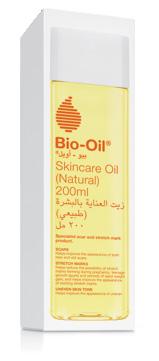
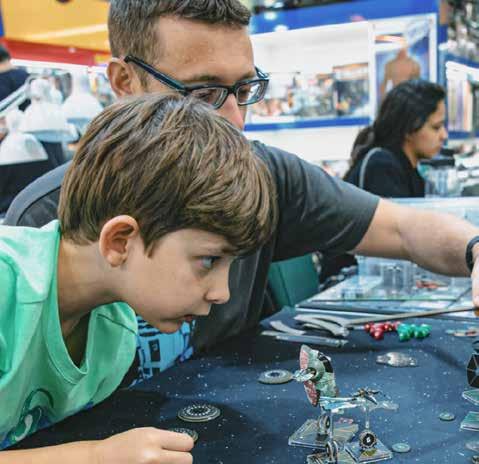
Family-friendly markets; a DIY workshop; the Pinktober events you don’t want to miss and more!


This month, we’re sharing some unique activities for families to enjoy at Times Square Center. With a focus on small businesses, community and sustainability, it’s a great place to spend time together!
Immerse yourselves in the various markets open every weekendthere’s so much on offer!
Try some pre-loved shopping at Baby Bazaar Market, open from 9 am until 2 pm. Here, you can find all baby essentials including toys, books, clothes, strollers and cribs. This month, the market takes place on October 5th and 20th.
Arte - The Markers’ Market
Venture into a hub of creativity and craftsmanship at ArteThe Markers’ Market. From designer fashion and handcrafted jewellery, to skincare, candles, pottery, soaps, art, homemade baked goods and more, this market has something for every member of your gang. Catch this quirky market on the 12th and 26th of the month, from 10 am until 7 pm.
Take a stroll through the vibrant community at Ripe Market and discover merchants offering a diverse array of items from independent small brands. You can stock up on a selection of farm-fresh produce and local fruits and vegetables too! This is a colourful experience that little ones are sure to enjoy. It takes place this month on October 6th and 27th, from 10 am until 7 pm.
Taking adventure to the next level, Adventure Zone is actionpacked with various exciting activities your family will love! These include the Low Ropes Course, High Ropes Course, Climbing Wall, Fun Walls and an outside bike area, providing the ultimate fun to satisfy even the most thrill-seeking members of your family.
StuDIYo Lab inspires children to harness their unlimited imagination, giving them the tools and skills necessary to hone their craft. From five years and above, StuDIYo Lab offers a range of exciting workshops for children, adults and families


where everyone will walk away with a finished project to be proud of, and an understanding of the precision that goes into Design Technology. Don’t miss this one!
Back to Games is the UAE’s first retail shop that specialises in the sale of a vast amount of modern board and card games. The store’s passion lies in developing and expanding a sustainable and entertaining tabletop gaming culture in the UAE. It proudly offers a wide variety of North American and European tabletop games embracing various themes. All ages will enjoy countless hours of excitement from here!
Chillout Ice Lounge is the first ice lounge in the Middle East. Offering a unique experience for families and friends, it’s become one of the definitive landmarks in the region. Spellbinding for kids and adults alike with its ice sculptures, seating arrangement, delicious hot chocolate and illuminated interiors, it’s bound to be an outing to be remembered!
October is Breast Cancer Awareness month! We shine a spotlight on the events and offers happening in support of this worthy cause.
Embrace your femininity this October as Address Beach Resort turns pink in celebration of Pinktober. The resort invites you to participate in two enriching activities designed to not only celebrate self-love and creativity, but also to do good in the process. In partnership with Bliss Flower Boutique, both events will be elevated with stunning floral arrangements provided for all participants, adding an extra layer of elegance as the community comes together to support breast cancer awareness.

On Saturday, October 12th, give their Self-Love and Meditation Retreat a try, designed to nurture feminine energy and strengthen your connection between body and mind. A collaboration with ‘Salt and Crystal’, you’ll begin your voyage with a welcome reception with refreshing drinks, before discovering the magic of healing crystals and engaging in a heart-opening guided self-love meditation and energy practice, to help you find your inner balance. The day culminates in a unique bracelet-making workshop, allowing you to craft your own healing accessories, while connecting over a relaxing afternoon tea and Q&A session.
Date: Saturday, 12 October from 10am to 12pm
Location: Li’Brasil at Address Beach Resort
Price: AED 330 per person
To book your spot, call +971 4 277 4003 or email info@saltandcrystal.com.

Later in the month, on Sunday, October 27th, join the ‘Paint and Dine’ soirée, where art and community come together in an energetic setting, all in support of a meaningful cause. Held in collaboration with ‘Design & Dine’, women are invited to wear pink and explore their creative side, while enjoying a buffet of light bite canapés along with two hot beverages or mocktails. Throughout the painting session, you will be encouraged to reflect on your own interpretations of feminine strength, honouring the resilience and courage of women impacted by breast cancer as you bring these themes to life on canvas. The event will conclude with a relaxed social session, sharing insights and experiences with fellow attendees. With some incredible prizes on offer for the best artworks as well, this unique blend of art, community and creativity promises to be a really memorable way to support Pinktober.
Date: Sunday, 27 October from 4 pm to 7 pm
Location: The Lounge terrace at Address Beach Resort
Price: AED 355 per person
To reserve your spot, visit www.designanddine.ae/ event/pinktober-painting-afternoontea, call +971 566 127064 or email hello@designanddine.ae.
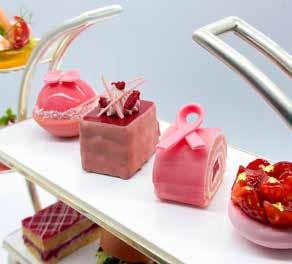
This October, Kempinski Hotel Mall of the Emirates proudly partners with Al Jalila Foundation to present the exclusive Pink Afternoon Tea at Aspen Café, in support of Breast Cancer Awareness Month. In honour of this partnership, 10% of proceeds from the Pink Afternoon Tea will be donated to the foundation to support breast cancer patients and their families. Throughout the month, the hotel’s signature afternoon tea will take on a delightful pink theme, offering a carefully curated selection of savoury and sweet treats designed to evoke the spirit of the campaign. Indulge in unique creations, from beetroot salmon with dill cream cheese to the irresistible raspberry chocolate cake, all while contributing to a meaningful cause.
Priced at AED 200 for one and AED 375 for two, the Pink Afternoon Tea offers a refined culinary experience where each bite is part of an elegant tradition that supports a vital cause. Now in its tenth year, it’s through efforts like this that we can play a small but significant role in raising awareness and helping improve lives.
Visit www.kempinski.com/en/mall-of-the-emirates for more details.

The popular Pinktober fundraising event is set to return with three fun familyfriendly events, donating all the proceeds to Al Jalila Foundation to directly support breast cancer patients and their families, as well as to fund research.
IGNITE Pink is Punk Swim:Run
On Saturday, October 5th, the annual IGNITE Pink is Punk Swim:Run returns to the beautiful Anantara The Palm Dubai Resort. Categories include an open Swim and Run; two junior categories for participants aged 6-11 years and 12-
16 years, and the Fun Run for all ages. Everyone is encouraged to dress in their finest pink attire and fancy dress! Entry fees are AED 157.50 for adults, AED 315 for teams and AED 157.50 for juniors.
This will be followed by the IGNITE Pink is Punk Pink Paddle, a stand-up paddleboard session, which will be held at RIVA Beach on October 12th from 6 am. With distances ranging from 1 km to 4 km, the event is designed for paddleboarders aged 10 and up, and boards are available


for rent. Entry is 157.50 AED, inclusive of a vest and goody bag, with a variety of spot prizes also on offer.
Lastly, IGNITE Pink is Punk Moonlit Yoga will take place on October 14th at 7 pm. Experience a dynamic and revitalising candlelit session in the refreshing outdoor beach area at Anantara. Designed for all fitness levels and for those aged 16 and up, it’s priced at 105 AED and will consist of a gentle flow, incorporating breathing and meditation techniques that leave you calm and clear. Mats and towels will also be provided.
For more information and to register, visit www.ignite.ae/ignite-pink-is-punk.
Tracking your fertility with Clearblue; how zinc keeps kids healthy; reducing your family’s food waste and more!

Unfortunately, ear infections happen to most children at some point. This useful guide will help you recognise the symptoms and causes, and know your treatment options.

Ear infections are one of the most common childhood ailments, affecting kids of all ages, from toddlers to school-aged children. Most parents have faced the distress of seeing their little ones in pain, tugging at their ears, or struggling with sleepless nights due to ear discomfort. While ear infections can be worrying, understanding what they are, how to manage them and when to seek help will give you the reassurance that you know how to handle the next one.
An ear infection, medically known as otitis media, occurs when the middle ear (the space behind the eardrum) becomes inflamed and infected. This can happen due to a build-up of
fluid caused by bacteria or viruses, leading to pain and sometimes temporary hearing loss. Kids are more susceptible to ear infections than adults because their Eustachian tubes (the narrow passages connecting the middle ear to the back of the throat) are shorter, more horizontal and are more easily blocked. This makes it harder for fluid to drain out, creating an ideal environment for germs to multiply.
Ear infections can be tricky to spot, especially in younger children who may not yet have the words to describe how they feel. However, there are some tell-tale signs that parents can look out for:
Pulling or tugging could could be a sign of discomfort or pain caused by an infection.
Children often become unusually fussy or irritable when they have an ear infection, especially when lying down, as this position can increase ear pressure.
The pain and pressure in the ear can make it hard for little ones to settle, leading to restless nights.
Swallowing can be painful with an ear infection, so children may show a lack of interest in eating or drinking.
In some cases, yellow or clear fluid may drain from the ear. This can indicate a ruptured eardrum, which should be examined by a healthcare professional.
Your child might seem unresponsive or less alert to sounds around them if fluid in the ear is affecting their hearing.
If you notice any of these symptoms, especially if your child is in pain or the symptoms persist, it’s best to seek medical advice.
Ear infections often follow a cold, sore throat or other respiratory infections. When a child has a cold, the bacteria or viruses causing it can spread to the middle ear, leading to a build-up of fluid. This is an ideal breeding ground for germs, sometimes resulting in an infection. Other factors that can increase the likelihood of ear infections include:
• Age
• Allergies
• Exposure to smoke
• Bottle feeding
If you suspect your child has an ear infection, it’s best to visit a doctor. They will examine your child’s ear using an otoscope - a small instrument with a light and magnifying lens. This allows them to see the eardrum and check for signs of infection, such as redness, swelling or fluid build-up.
In some cases, the doctor may perform a tympanometry test, which measures the movement of the eardrum to determine if there’s fluid in the middle ear. These tests help confirm whether there is an infection, as well as how best to treat it.
The treatment for an ear infection depends on your child’s age, the severity of the symptoms and whether it’s a first-time infection or a recurring issue. Let’s look at some common treatment options.
In many cases, especially for older children with mild symptoms, doctors may recommend a period of watchful waiting. This approach allows the body’s immune system to fight off the infection without using antibiotics.

If the ear infection is severe, persistent or your child is very young (under two years), your doctor may prescribe antibiotics. It’s important to complete the full course of antibiotics, even if your little one’s symptoms improve, to be sure the infection is entirely cleared.
Over-the-counter pain medications like paracetamol or ibuprofen can help reduce fever and ease any pain. For babies and younger children, consult your doctor for the appropriate dosage.
If your child has a build-up of earwax or fluid, your doctor may recommend ear drops to alleviate their symptoms and try to get the ear to drain.
While it’s impossible to prevent every ear infection, there are steps parents can take to reduce the risk.
Teaching your child to wash their hands regularly can reduce the spread of germs that cause colds and respiratory infections.
Keep your child away from cigarette smoke, as it can irritate their respiratory tract and increase the likelihood of ear infections.
Stay up-to-date with vaccinations. Immunisations, particularly the flu vaccine and pneumococcal vaccine, can help protect against infections that lead to ear issues.
Breastfeeding for at least the first six months can boost your child’s immune system and lower the risk of ear infections.
Avoid prolonged bottle feeding if you can. Try not to let your child fall asleep with a bottle particularly, as lying down while drinking can cause fluid to accumulate in the middle ear.
Most ear infections clear up on their own or with minimal treatment, but there are times when medical intervention is necessary. Seek medical advice if:
• Your child’s symptoms last longer than two days.
• There is severe pain or a high fever.
• You notice fluid, pus, or blood draining from the ear.
• Your child has trouble hearing or seems unusually lethargic.
It’s always better to err on the side of caution and consult a healthcare professional if you’re unsure.
Ear infections are an uncomfortable part of childhood, but with the right care and knowledge, you can help your little ones recover quickly and comfortably. Understanding the signs, getting timely treatment and trying to prevent infections in the first place can make all the difference. While no parent wants to see their child in pain, remember that ear infections are common and will pass, either by themselves or with the help of a visit to the doctor.
In this article, we take a look at the science of conception technologies with one of our favourite brands, Clearblue.

Take control of your journey to motherhood with confidence! Clearblue’s advanced technology empowers you to maximise your chances of conception by accurately identifying your most fertile days. 1 No more guesswork - Clearblue helps pinpoint your two peak fertility days, giving you the best opportunity to start your family. Why leave something so important to chance when science can guide you? Trust Clearblue to help you take the next step toward motherhood with clarity and assurance.
Ovulation tests work by detecting the surge of luteinizing hormone (LH) that signals ovulation is near. Using the test is simple - just urinate on the absorbent tip, and within minutes you’ll have a clear and accurate result, either an LH surge or no surge detected.
You don’t need to test every day. Instead, time your testing according to your cycle length. If the result shows no LH surge, test again the next day, continuing until a surge is identified. This signals that today and tomorrow are your two most fertile days, giving you the best chance to conceive. After detecting the surge, there’s no need to keep testing during that cycle. If needed, you can start fresh during your next cycle, using any leftover test sticks from your current pack.
Clearblue Digital Ovulation Tests are designed to be clear and easy to interpret. A smiling face means that you have identified your LH surge, whereas an empty circle means the surge of luteinizing hormone has not yet been identified. If this is the case, test again tomorrow.
Clearblue uses sophisticated technology that adapts to your unique hormonal profile and their Clearblue Digital Ovulation Test is over 99% accurate at detecting your LH surge.
Clearblue not only provides ovulation tests but also offers a range of highly accurate pregnancy tests. These tests are over 99% reliable from the day your period is expected, giving you clear results when you need them most. For those eager to know sooner, Clearblue also has tests that can be used up to six days before your missed period, or five days before your period is expected, offering early insights into your pregnancy journey. 2
With over 35 years of science behind them, Clearblue has been developing products to support couples in search of parenthood for a long time, making them the reliable choice for your pregnancy journey!


1 A study of 40 women found agreement with ovulation observed by ultrasound. Johnson S, et al. Clin Chem Lab Med. 2015; 53(7):1099- 108.
2 Clearblue Ultra Early: 79% of pregnancy results can be detected 6 days before your missed period.
Zinc is a hugely important mineral that influences our wellbeing in many ways.
Zinc is a mineral that plays a significant role in the growth, development, immunity and overall health of children. As parents, making sure that little ones are getting all the necessary vitamins, minerals and nutrients they need can feel like a full-time job! This article will focus on zinc, a key nutrient that profoundly impacts children’s wellbeing. Let’s explore why zinc is so essential for the growth, energy and vitality of kids.
Zinc is not just another mineral; it’s an important piece of the nutrition puzzle for children! Let’s break it down.
Zinc plays a vital role in supporting your child’s immune system. It helps to develop and activate T-lymphocytes, which are central to fighting off infections and illnesses. Ensuring that kids get enough zinc helps them maintain a robust immune response, keeping them healthy and reducing the likelihood of picking up bugs and viruses in the classroom.
Zinc is also essential for proper development during childhood. It supports cellular growth and division, which are critical processes during periods when your child is rapidly growing, such as infancy and teenagehood. Adequate zinc intake is vital for good physical health, including robust organs and tissues.
Zinc plays an important part in brain health, impacting neurotransmitter function and cognitive development. It is involved in processes that affect learning, memory and attention, making it a brilliant addition to your little one’s term-time nutrition! Giving children enough zinc is a great way to support their academic performance and ability to learn and understand new information.

Zinc contributes to keeping children’s skin healthy and strong, by promoting good healing and reducing inflammation. It can be beneficial in treating and preventing skin conditions, such as rashes, flare-ups and other issues, making it a great boost to children’s overall skin health.
Zinc deficiency can lead to various health issues, including slow growth, weakened immune response and increased susceptibility to infections, so it’s really important to get enough of this powerful mineral into your child’s diet!
For infants, breast milk or formula typically provides sufficient zinc for their needs. As solids are introduced, it’s good to incorporate zincrich foods into their diet to be sure they continue to meet their zinc requirements.
During the toddler years, children undergo rapid growth and development, meaning zinc intake is critical. A balanced diet rich in zinc supports their immune function, growth and brain development. On the other hand, insufficient zinc can lead to developmental delays and increased vulnerability to infections.

Effects of deficiency in toddlers:
• Stunted growth
• Frequent infections
• Mood swings
• Low energy
Good sources of zinc for toddlers:
• Lean beef, pork and lamb
• Chicken and turkey
• Fish and shellfish
• Beans and lentils
• Milk, yoghurt and cheese
Incorporating these zinc-rich foods into toddlerfriendly meals can make a significant difference in your little one’s zinc intake, helping them to blossom into a healthy, sturdy child.
As children transition through childhood, their zinc needs remain high. Establishing healthy
eating habits with zinc-rich options becomes more important, ensuring they have the energy and focus to thrive in their daily activities and succeed at any sports or academic challenges they face.
Effects of deficiency in childhood:
• Impaired growth
• Weakened immunity
• Poor learning and attention span
Good sources of zinc for childhood:
• Meat
• Poultry
• Salmon
• Shellfish
• Beans, lentils and chickpeas.
• Dairy
• Almonds, pumpkin seeds and sunflower seeds
By incorporating these foods into meals and snacks, you can help prevent deficiencies and keep your child’s growing body nourished and strong.
As children enter adolescence, rapid growth spurts and hormonal changes make their nutritional intake especially significant. Zinc plays a vital role during this time, supporting teens’ physical growth and mental development as they navigate the challenges of becoming adults.
Effects of deficiency in teens:
• Shorter height
• Increased illness
• Poor recall and concentration
New sources of zinc for teens:
• Oysters
• All legumes
• Walnuts
• Chia seeds
Encouraging your teen to make good food choices and emphasising the importance of a balanced diet can help them meet their zinc needs during this important stage of development.
Incorporating zinc-rich foods into your family meals is an excellent way to ensure children of all ages receive enough of this essential mineral. Here are some simple tips to consider when planning your household’s shared meals:
Mealtimes can be a delightful journey with zinc-rich foods taking centre stage! Create a weekly meal plan that includes various zinc sources to help your family meet their needs. Focus on meats, poultry, seafood, legumes, dairy and whole grains for a balanced diet.
Make meals fun by experimenting with different recipes and cooking methods to make zinc-rich foods more appealing to kids. Try grilling chicken, making bean tacos or adding lentils to pasta dishes.
When grocery shopping, look for zincfortified cereals and grain products. These easy swaps can help boost your family’s zinc intake without much effort.
Keeping a selection of zinc-rich snacks on hand is a straightforward way to ensure your children are getting enough of this vital mineral. Opt for snacks like yoghurt with nuts, whole grain crackers or nut butter on toast.
Zinc is essential for a child’s diet, supporting their health from infancy through adolescence. Deficiencies can have significant consequences on their physical and cognitive development, but by implementing these tips, you’ll be well able to provide your family with the zinc they need to flourish!
Varicose veins can be distressing, mostly because of their physical appearance. Luckily, the condition is considered very manageable with the right lifestyle changes. Here, we answer your most common questions.

Pregnancy is a time of wonder and excitement, but it can also come with a few less glamorous side effects! One common issue that many expectant mothers experience is varicose veins. These bulging, often blue or purple veins appear on the legs, and while they might be harmless, they can cause discomfort and be quite upsetting. Knowing what varicose veins are and how to manage them can help you navigate this aspect of pregnancy with ease and more kindness towards your body! Let’s take a look.
Varicose veins are swollen veins that often appear on your legs. During pregnancy, your body undergoes many significant changes to support your growing baby, including an increase in blood volume. This extra blood is necessary to nourish your little one, but it also puts additional pressure on your veins. Your expanding uterus can also press on the large vein on the right side of your body (the inferior vena cava), which has the effect of raising the pressure in your leg veins. Hormonal changes, particularly the rise in progesterone, also relax the walls of your blood vessels, making it easier for veins to stretch.
Varicose veins are more likely to happen during pregnancy due to a combination of factors. The increased blood volume and hormonal changes are significant contributors, but genetics also play a big role. If your mother or grandmother had varicose veins while pregnant, you might be more prone to them as well. Also, as your little baby grows, the pressure on your pelvic veins increases, making it more difficult for blood to flow back up from your legs to your heart. This causes blood to pool in your veins, leading to the characteristic bulging appearance of varicose veins.
For most women, varicose veins are more of a cosmetic issue than a serious health concern. However, they may cause discomfort, including aching, heaviness and swelling in the legs. In rare cases, varicose veins can lead to more severe complications such as deep vein thrombosis (DVT), a condition where a blood clot forms in a deep vein. If you notice sudden swelling, redness or pain in your leg, it’s essential to seek medical advice immediately. However, this is very rare.
While you might not be able to prevent varicose veins entirely when you’re expecting, there are steps you can take to manage them and reduce any discomfort. Below are a few tips to keep your legs feeling as comfortable as possible.
Regular exercise, such as walking or swimming, can help improve your circulation and reduce the risk of varicose veins. Gentle leg exercises, like calf raises or ankle rotations, may also be beneficial for keeping blood moving smoothly.
Elevate your
Whenever possible, prop your legs up on a pillow or footrest to help blood flow back to your heart more easily. Avoid crossing your legs when sitting if

you can, as this can actually restrict blood flow and make it harder to keep everything flowing with ease.
Compression stockings are designed to help blood move more effectively through your veins. They can be especially helpful if you have to stand or sit for long periods during the day, especially later on in your pregnancy when your body may feel increasingly swollen.
While gaining weight is a natural and healthy part of pregnancy, try your best to keep it within the recommended range for your body type. Excess weight can put even more pressure on your circulation, increasing your likelihood of developing varicose veins.
The good news is that for many women, varicose veins improve or even disappear after giving birth. This is because the pressure on your veins suddenly decreases and your hormone levels return to normal. However, if yours persist, there are cosmetic treatments available to help reduce the appearance of varicose veins, including removing the veins with traditional surgery, or sclerotherapy and laser therapy, which can be done as a day patient. Sclerotherapy involves injecting a solution into the vein, causing it to collapse and fade over time, whilst laser therapy uses light energy to seal off smaller varicose veins, making them gradually disappear. Surgical options, though typically reserved for more severe cases, take out the problematic veins through small incisions.
Varicose veins might be an unwanted side effect of pregnancy, but this condition tends to be manageable with a few simple lifestyle changes and generally poses no risk to you or your baby. It’s normal to find these veins upsetting and if they continue to bother you, don’t hesitate to speak with your healthcare provider to find a solution that brings you the peace of mind you deserve.
Here’s a family-friendly guide packed with easy and practical tips to help you reduce food waste in your home!
Every family knows the struggle of dealing with leftover food. The untouched meals, the forgotten vegetables in the fridge drawer and the bread that’s just turned stale - it all adds up! While these situations are frustrating, they’re more than just a nuisance. Food waste has a significant environmental impact, contributing to greenhouse gas emissions and the loss of valuable resources used to produce, transport and package the food. With a bit of planning and a few simple strategies, your family can make a big difference in reducing food waste, saving money and adopting sustainable habits that benefit both your household and the planet. Let’s dive in!
One of the simplest ways to minimise food waste is to start with a plan. It may sound simple, but before you do your weekly shop, take time to map


out your family’s meals and snacks. Knowing exactly what you’ll need for each day will prevent you from buying items that end up sitting unused at the back of the fridge.
Write out a meal plan that includes breakfasts, lunches, dinners and even the little bits in between, like school snacks or afterdinner treats. Involve the whole family in this process if you can, so nothing gets missed and you’re less likely to have unappetising leftovers. It can also be good to check what ingredients you already have at home before making your list. Planning around what’s already in your pantry or fridge can help you use up items before they spoil and avoid unnecessary purchases. We’ve all bought something, only to find an unopened can or packet of it in the back of the cupboard!
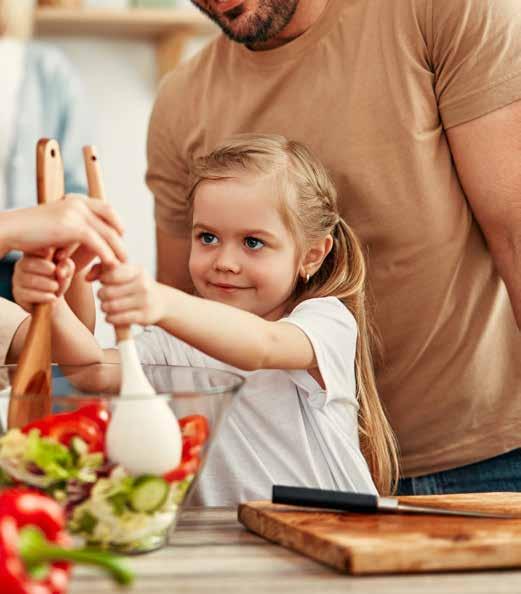
Even with a well-thought-out meal plan, it’s easy for perishable items to get overlooked. A great solution for families is to designate an ‘Eat Me First’ box or section in your fridge. This can be as simple as a plastic container or a clearly marked shelf where you place foods that need to be eaten soon, such as leftovers, half-used ingredients or produce nearing its prime.
Get kids involved by letting them help organise the ‘Eat Me First’ box and encouraging them to pick their snacks or meals from it, even
challenging them to come up with the most inventive snack or dish from what’s there. This strategy not only reduces food waste but also brings about an awareness and a sense of responsibility in little ones.
Cooking too much is one of the biggest contributors to food waste. To avoid this, it’s helpful to get a good sense of how much your family actually eats in one sitting. Start by using measuring cups or weighing ingredients until you’re familiar with portion sizes that
work for your household. Keep a record of any leftover quantities, and adjust your recipes accordingly next time.
If you’re not sure how much your kids will eat, start with smaller portions and let them ask for seconds if they’re still hungry. This way, you’re not scraping uneaten food off plates and into the bin. Also, be mindful of portion sizes when serving snacks - pouring out a small bowl of chips or popcorn rather than giving your child the whole packet can prevent food from being wasted.
Leftovers don’t have to be boring! Instead of looking at them as last night’s unwanted remains, think of them as a base for a new meal. Transforming leftovers into something different is a fun and creative way to cut down on waste.
For example, roast chicken from Sunday dinner can become a tasty chicken salad for Monday’s lunch. Vegetables can be blended into a hearty soup or added to a frittata, and leftover rice can be transformed into fried rice with just a few extra ingredients. Get the family involved in ‘leftover makeovers’ if you can, as it makes the process feel more fun for everyone!
If your family enjoys batch cooking, consider portioning out meals into containers and freezing them. This way, you’ll have homemade ready-to-eat meals on hand for busy days, reducing the temptation we all struggle with to order takeaway and ensuring no food goes to waste.
A little knowledge about food storage can go a long way in keeping ingredients fresh for longer. Make sure you’re storing fruits and vegetables correctly - some do best in the fridge (like apples, carrots and broccoli), while others are happier on the counter (bananas, tomatoes and onions). To prevent confusion, use storage labels or keep a quick-reference guide on your fridge door.
Remember to store leftovers in airtight containers to keep them fresher for longer. If your fridge is often overloaded, consider investing in clear containers so you can easily see what’s inside, reducing the risk of food getting lost or forgotten. You can even mark the date on containers to remind yourself when food needs to be eaten.

For pantry items like cereals, pasta and rice, transfer them into clear, airtight jars to keep them fresher and protect them from pests. Keep an eye on expiry dates and make a habit of placing newer items at the back and older ones at the front - this simple hack means you use things up in the right order.
Think twice before you toss those carrot tops or broccoli stalks. Many so-called “scraps” can be repurposed into delicious dishes or used in other ways. Vegetable peels and ends can be simmered into a nutritious homemade stock. Overripe bananas make the perfect base for banana bread or smoothies. Even stale bread can be transformed into breadcrumbs, croutons or a tasty bread pudding.
Challenge yourself and your family to come up with innovative ways to use up scraps. Turn it into a fun game to see who can create the most inventive dish. This not only helps reduce waste but also encourages kids to appreciate food and think creatively in the kitchen.
Your freezer is your best friend when it comes to reducing food waste. Many foods, from fresh herbs to cooked meals, can be frozen and enjoyed later. Chop up herbs and freeze them in ice cube trays with a little olive oil - perfect for dropping straight into soups or stews. Leftover meals can be stored in portion-sized containers, ready to be defrosted for a quick and easy dinner.
Make a habit of freezing excess portions of cooked rice, pasta or even sauces. Bread that’s about to go stale can be sliced and frozen, ready to be toasted as needed. Freezing leftovers not only extends their shelf life but also gives you a break from cooking on busy days.
Reducing food waste is much easier if you get everyone on board - it makes things much more manageable and also fun! Aim to teach your kids why reducing food waste is important and show them how they can help by letting them take part in meal planning, food storage and deciding what to do with leftovers. Make it a family project or challenge to reduce your household’s food waste each week.
You could even create a food waste diary, where the family records how much food is thrown away and sets goals to improve. This way you can celebrate your progress with small rewards, like a movie night or a special dessert. This keeps the momentum going and shows your children that even small changes can make a big difference.
No matter how careful you are, there may still be some food waste. For items that can’t be used up, consider setting up a compost bin. Composting turns food scraps into rich soil that can nourish your garden, reducing the amount of waste that ends up in landfills.
If you have packaged food or fresh produce that’s still edible but unlikely to be used, consider donating it to a local food bank or community kitchen. This way, your food can go to someone in need rather than being thrown away.
By adopting these simple strategies, your family can play a part in reducing food waste and making mealtimes more mindful. You’ll be saving money, helping the environment and teaching your kids valuable lessons about sustainability. Reducing food waste isn’t just about what’s on your plate, it’s about adopting a thoughtful and responsible approach to food as a family. Good luck!
We discuss the signs, risks and treatments available.

October is a month dedicated to raising awareness about breast cancer. Whether you’re familiar with the topic or just starting to learn, this Pinktober, it’s essential to remind ourselves of the facts, support the women and families affected, and know the signs to watch out for.
Breast cancer occurs when cells in the breast start to grow uncontrollably. It can affect anyone, but it predominantly impacts women. Breast cancer is a significant health issue in the UAE, accounting for a large percentage of cancer diagnoses among women. Recent estimates suggest that around 4,700 new cases are diagnosed annually in the region, making it the most prevalent cancer type among women. The good news is that with early detection,
While anyone can develop breast cancer, certain factors can increase risk:
• Age
• Family history
• Obesity
• A lack of physical activity
Being aware of these risk factors can empower you to take charge of your health!
In the UAE, women are recommended to start routine mammogram screenings at the age of 40, with screenings every two years if there are no known risk factors for breast cancer. This is essential for early detection, but if you’re outside this age range or have concerns, don’t hesitate to talk to your doctor about when you should get screened. If a mammogram or self-exam indicates a potential issue, further tests such as ultrasounds or biopsies may be necessary to confirm a diagnosis.
If cancer is found, your care team will talk to you about the various treatment options available and the best one for you. These may include:
• Surgery
• Radiotherapy
• Chemotherapy
regular screening and proper treatment, survival rates are improving all the time!
Awareness is key! Here are some signs to keep an eye out for:
• Lumps or thickening: A noticeable lump or a change in the texture of the breast tissue.
• Change in appearance: Any unexpected changes, such as discharge or redness should be checked out.
• Skin anomalies: Dimpling, puckering, or a rash on the breast can indicate issues.
If you notice any of these changes, don’t hesitate to speak to your GP. Remember, early detection saves lives!
• Hormone therapy
This Pinktober, there are countless ways to get involved. You can show your support by donning pink attire or accessories and you could join local runs, walks or awareness events to raise funds. Additionally, you might consider sharing information on social media or donate to charities that fund research and provide support to those affected.
Understanding breast cancer is vital for early detection and treatment. Remember, regular self-exams and screening can make a world of difference. Together, we can make strides in the fight against breast cancer, by staying informed, staying proactive and spreading the word!
How to improve your quality family time; ways to build shy kids’ confidence; the power of saying ‘I notice…’ and more!
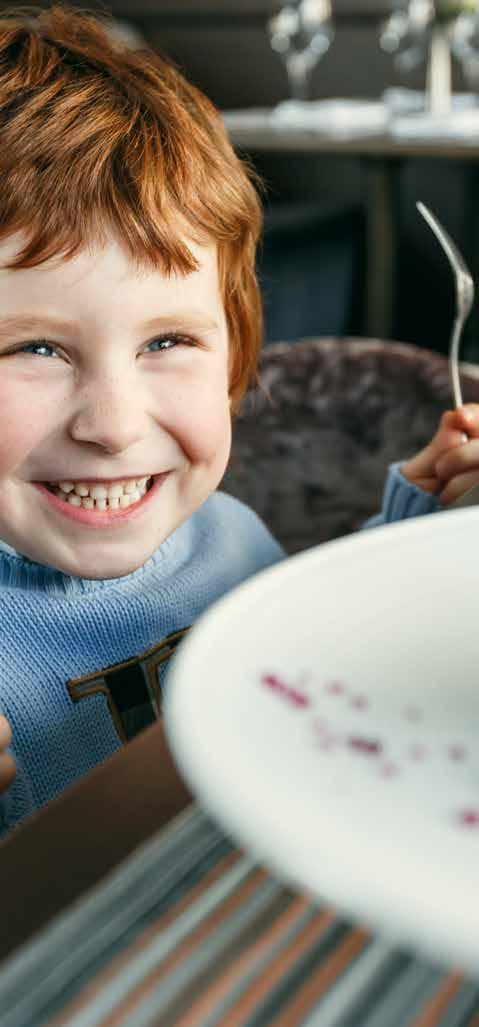

It may seem traditional, but having polite table manners is a useful life skill that will stand to your children throughout their life.
Teaching children good table manners is more than just ensuring they know how to use a fork and knife - it’s about having the skills to be able to eat in any setting. Good manners aren’t learnt overnight, but with patience and consistency, they become second nature. And, as an added bonus, well-mannered kids feel more confident in social situations and are more likely to understand how to behave at family gatherings, restaurants or when visiting friends.
The earlier you introduce basic table manners, the easier it will be for your child to adopt them as habits. Even toddlers can learn to say “please” and “thank you” or ask for something to be passed instead of grabbing for it. If you can, make your expectations clear from the start around using utensils properly, not interrupting others while they’re speaking and staying seated until everyone has finished eating.
It can be helpful to create a list of ‘family mealtime rules’ and quickly review it together before meals. You can even turn this into a fun project by creating a colourful chart to hang in the kitchen. Keep the rules simple and straightforward, such as “No speaking with food in your mouth” or “Always say thank you when your food is served.” This visual reminder will reinforce your expectations but in a positive and fun way, almost like a game.
As we know, children learn by observing the adults around them, so be sure to show your kids the table manners you’d
like them to adopt. When you behave respectfully, you show your child that these actions are a normal part of daily life and they’re more likely to follow your lead if they see you consistently practising good manners.
When possible, have small conversations about table manners outside of mealtimes. If you notice someone displaying excellent manners on a television programme or in a storybook, point it out and explain why their behaviour was so great. This reinforces the concept of good manners in a context that your child can relate to.
Avoid turning table manners into a battleground. If mealtimes are constantly associated with criticism or correction, your child might develop negative feelings about eating together. Instead, focus on the positives - praise your child when they exhibit good manners, no matter how small the action. Try sentences like “I love how you waited patiently for your turn to speak!” or “Great job keeping your napkin in your lap.”
To encourage good behaviour, consider introducing a reward system. For example, if your child uses their manners consistently throughout the week, they could choose a special weekend activity or receive a small treat. Positive reinforcement helps children understand that good manners are appreciated and noticed, motivating them to continue practising.
With time, patience, and encouragement, your little ones will soon master these skills and carry them with pride wherever they go.

We dive into some easy-to-implement ways to grow your introverted child’s confidence in social situations they may currently find challenging.
Raising a child who is naturally shy can be both a rewarding and challenging experience, that often comes with its own unique set of trials. While it’s wonderful to see your little one express themselves in their own way, watching them struggle to engage socially or or find their voice in group settings can be really tough. As parents, our aim is to nurture our kids’ authentic selves, while also giving them the tools and encouragement to navigate social situations with ease and confidence.
The great news? Confidence isn’t something kids are simply born with or without - it’s a skill that can be nurtured and developed, just like any other. With the right approach and consistent support, you can help your little one blossom, allowing their self-assurance to grow naturally over time. Let’s explore some effective ways to empower your child while honouring their inherent personality.
Before diving into strategies for building confidence, it’s important to recognise that shyness is a natural temperament. Some children are simply more reserved or cautious by nature. Shyness often stems from a child’s sensitivity to their surroundings or a need to observe before fully engaging. This behaviour isn’t a problem that needs fixing. Instead, it’s a wonderful part of who your little one is, and it’s vital to honour this quality while helping them develop their own style of engaging with the world.
The way we perceive shyness can significantly shape how our children feel about themselves. If we view it negatively, we may unintentionally project our anxieties onto our kids, making them feel that being quiet or reserved is somehow undesirable. Instead,
embrace shyness as a natural and valuable part of their personality. By creating a safe and supportive space, you’ll empower your child to grow and develop at their own pace, nurturing their confidence on their terms.
Figuring out where to start when it comes to building up your little one’s self-confidence is a process that takes time, patience, and persistence. Here are a few strategies to get you started on that journey.
Many shy children have rich inner worlds but struggle to express themselves outwardly. Providing them with varied opportunities to share their thoughts and feelings - through art, storytelling, or even role-play - can be incredibly empowering. Whether it’s drawing a picture of their day or creating stories with toys, these activities send the message that their voice matters and that what they think and feel is important. By encouraging selfexpression in a relaxed, pressure-free way, you help them gain confidence in their ability to communicate.
It’s easy to fall into the habit of describing your little one as “shy,” but labels can be limiting. Children often internalise these labels, making it harder for them to step outside the expectations they believe others have of them. Instead of labelling your little one this way, focus on describing their actions without judgement. For example, “I noticed you took your time before joining the group - how were you feeling doing that?” This approach validates their experience while giving them space to explore their feelings and reactions.
Children learn a great deal through observation. By modelling confident behaviour, whether it’s introducing yourself to someone new or sharing your opinions respectfully, you set a powerful example for your little one. Narrate your own thought process out loud to show your child how you navigate different social situations. For instance, “I’m a bit nervous about meeting new people too, but I’m going to take a deep breath and say hello because I know it will be worth it!” This helps your child understand
that even adults feel unsure at times, and it’s okay to take small steps towards overcoming those feelings.
One of the most effective ways to build confidence in shy kids is through carefully curated social experiences that feel safe and positive for them. Think of it as helping your child climb a ladder, rung by rung, until they feel steady and secure at the top.
Instead of encouraging your little one to interact with large groups right away, start with smaller, more manageable settings. Invite one friend over for a playdate or arrange family gatherings where they can interact with familiar faces. As your child becomes more comfortable, you can gradually increase the group size and introduce new environments, all the while providing subtle verbal support and encouragement.
It can be really useful to help your child practise social interactions at home through
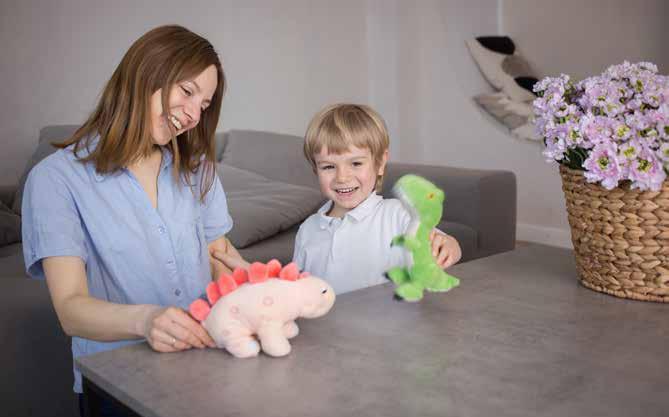
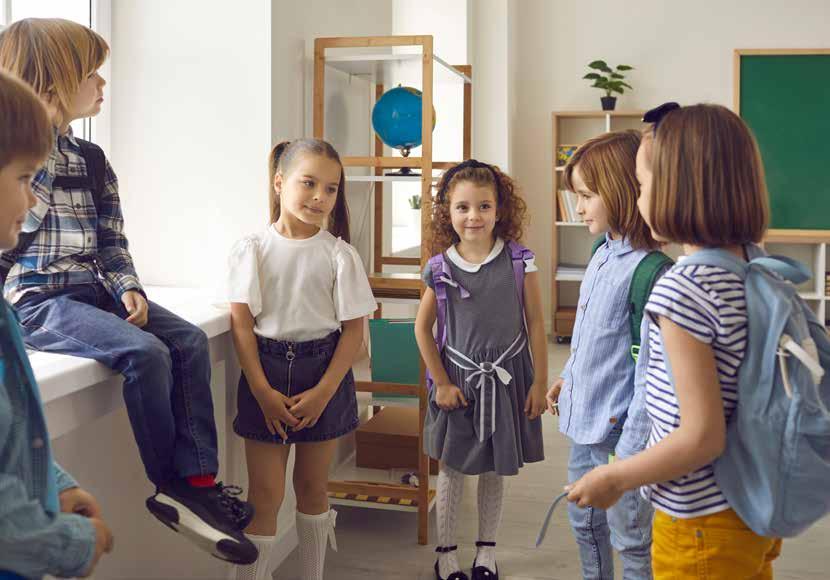
role-play. Whether it’s practising how to say hello, asking to join in on a game, or responding to a compliment, role-playing can make these situations feel more familiar and less intimidating. By acting out different scenarios, your child gains a sense of control and confidence, knowing that they’re prepared to handle various social encounters. Make sure to celebrate every effort, no matter how small.
Encourage your child to make small decisions on their own, like ordering their meal at a restaurant or speaking to a shop assistant. These low-pressure situations provide a chance for your little one to practise speaking up and being assertive in a safe environment. The more opportunities they have to express themselves independently, the more confident they’ll become in other social settings.
It’s important to recognise and celebrate your child’s efforts, not just their achievements. If they stepped slightly outside their comfort zone today, that’s worth acknowledging. Positive reinforcement can go a long way in building a child’s self-esteem.
Use phrases like, “I noticed you introduced yourself to the new neighbour today - that was really brave of you,” or, “I’m so proud of how you handled yourself when you didn’t know anyone at the party.” These affirmations show your child that you value their courage and effort, rather than expecting perfection or immediate results. Remember, it’s not about the end result, but the journey towards it. Often shyness involves avoiding interactions and not trying, because of a perceived sense of ‘failure’, but by praising your little one’s efforts, you can begin
dismantling this pattern and boost their confidence at giving different social situations a go.
It’s natural for kids to feel shy or nervous in new situations, but sometimes these feelings can escalate into social anxiety, making it hard for them to engage at all. If you notice signs such as intense fear of social situations, avoidance of school or activities, or physical symptoms like stomach aches or headaches before social events, it may be time to seek professional guidance.
A child psychologist or counsellor can provide valuable strategies to help your little one manage their anxiety and build social skills in a supportive environment. Remember, seeking help doesn’t mean something is wrong with
your child - it’s simply a way to equip them with tools to feel more comfortable and confident in their own skin.
Shy kids often possess unique strengths, such as empathy, thoughtfulness and creativity. They may be keen observers or deep thinkers, picking up on details that others might overlook. Wherever possible, emphasise these qualities and help your child see the positive aspects of their personality.
Activities that play to their strengths are brilliant for keeping their self-esteem and motivation high. If your child loves art, sign them up for a small art class. If they enjoy reading, join a local book club for children. Finding activities that align with their interests can make social interaction feel less intimidating and more enjoyable.
Teaching your child about having a growth mindset - believing that abilities and intelligence can be developed through
effort and perseverance - can be really transformative for shyer kids. Praise your child’s willingness to try new things, even if they’re hesitant at first. Use phrases like, “It’s okay if it didn’t go perfectly today. What’s important is that you gave it a go. I know you’ll keep getting better.”
When children view setbacks as opportunities to learn, rather than as failures, they’re more likely to take risks and push their boundaries in the future. This mindset helps them approach social situations with curiosity rather than fear.
It can be tempting to nudge your little one into situations you think are good for them, but it’s important to recognise their comfort levels. Forcing interactions or insisting they “come out of their shell” can backfire, leaving them feeling overwhelmed or misunderstood.
Instead, provide gentle encouragement and be there to support them. Allow your child to take the lead in social situations and trust them to progress at their own pace. Let them know you’re proud of their efforts, whether
that means initiating a conversation or simply observing from the sidelines.
The most significant boost to a child’s confidence comes from the unconditional support of their parents. So, remind your little one daily that they are loved and valued just as they are. Be patient and celebrate their personality while gently encouraging them to explore the world around them.
With consistent support and guidance, your child will begin to see themselves through your eyes - as capable, strong and confident in their own wonderfully unique way. Raising a confident child isn’t about changing who they are; it’s about helping them believe in who they already are.
With the right foundation and by using some of these strategies, your child will not only grow in confidence but also learn to embrace the richness of their shy nature, understanding that it’s not a barrier, but rather it’s a beautiful part of who they are.

Quality time is central to the strongest parent-child bonds. Here are ways to let go of ‘perfect’ expectations and set the stage for connecting with your little ones.
In our fast-paced, technology-driven world, finding the time and energy to enjoy stress-free moments with your family can often feel like a challenge. As parents, we juggle countless responsibilities, from work commitments and school runs to managing household chores and extracurricular activities. Yet, amidst the chaos, what matters most is the quality time we spend with our little ones. But how can we make family time more enjoyable, less stressful and something everyone looks forward to?
The key is not about planning grand, elaborate activities but embracing simplicity and being fully present in the time you have together. By adopting a relaxed approach and creating opportunities for connection, you can transform everyday interactions into meaningful memories. So, let’s explore some practical strategies to help you create more harmonious family moments—without the fuss or frustration.
One of the biggest obstacles to enjoying family time is the pressure to make every moment picture-perfect. We often have high expectations of how things should go, whether it’s a carefully planned day out or a simple family meal. The reality is that life with kids is rarely predictable. There may be tantrums, disagreements or unexpected changes in plans. Instead of getting caught up in making everything perfect, focus on being present and engaged, no matter what unfolds.
For example, if you’ve planned a fun day at the park, but it ends up being too hot, embrace the opportunity to play games indoors, build a fort, or watch a film together. Children are remarkably adaptable and they take their emotional cues from you. If you remain calm and positive when things don’t go as planned, they’re more likely to respond in the same way. Remember, it’s not the perfection of the moment, but the connection you create that leaves a lasting impression on your little ones.
Establishing simple, consistent routines can help reduce the stress of organising family time and create a sense of stability for everyone. Children thrive on routine because it gives them a sense of security and helps them know what to expect. Consider introducing a few family traditions that can be repeated weekly or monthly, such as a Friday pizza and film night, Saturday morning pancake breakfasts, or Sunday afternoon walks in the park.
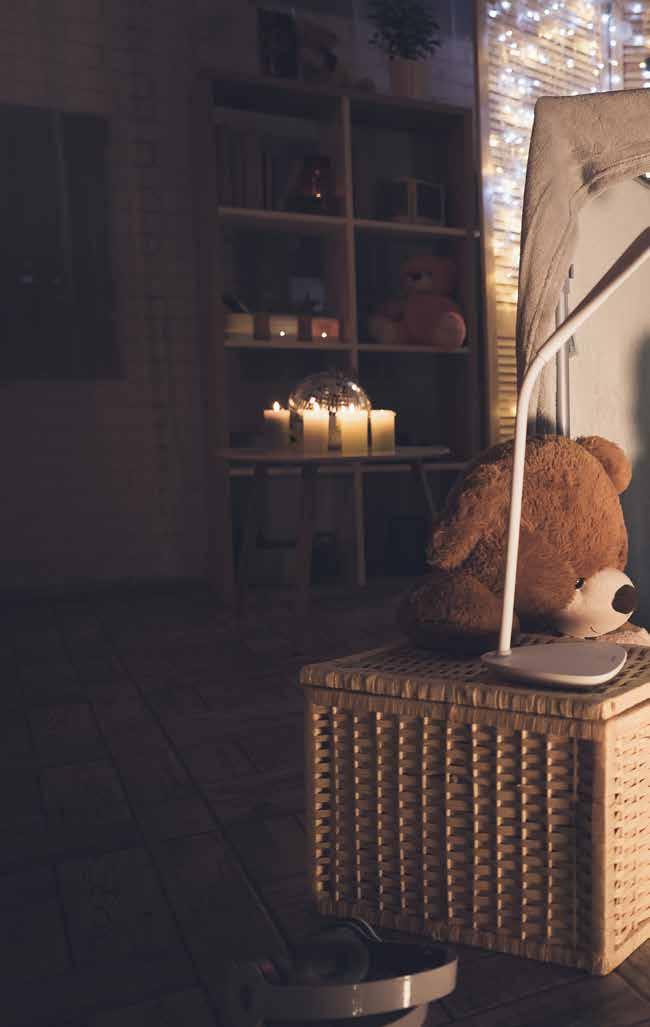
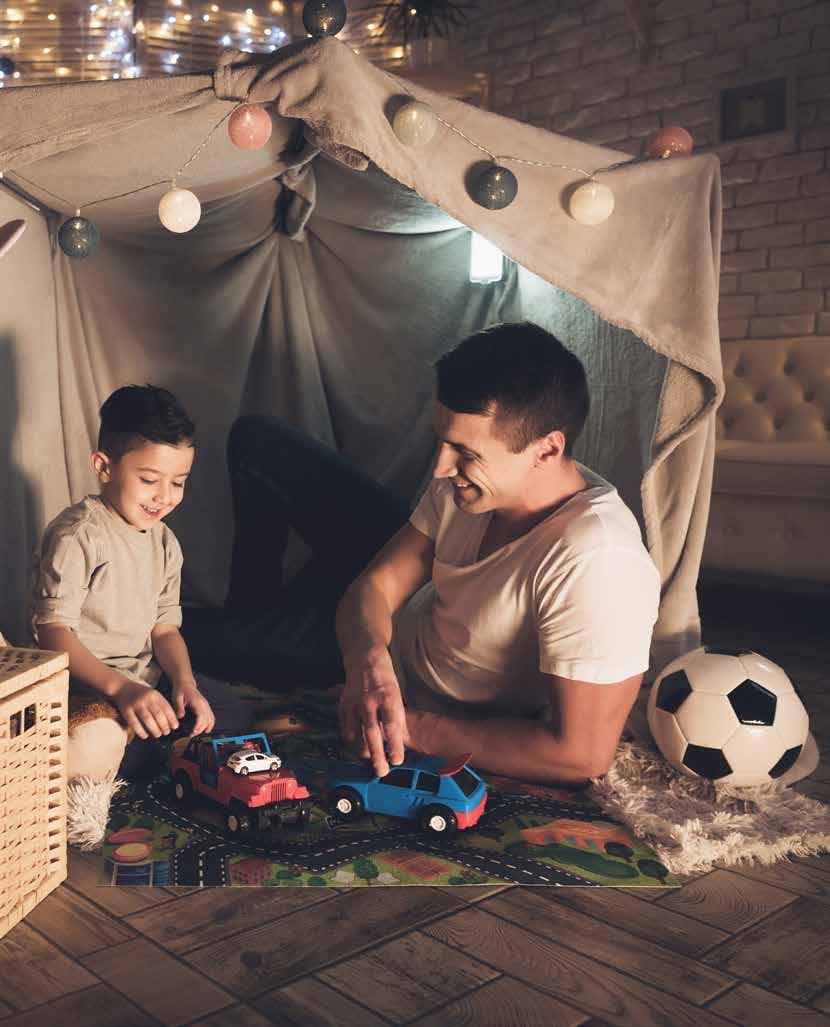

Family rituals don’t have to be elaborate or time-consuming - they just need to be regular. Even a fifteen minute reading session before bed or a quick catch-up over a cup of hot chocolate can become cherished moments that strengthen your family bonds. When these routines are in place, there’s less pressure to invent new activities all the time, and everyone knows there are set times dedicated just for family.
It’s no secret that screens can be one of the biggest distractions during family time. Whether it’s scrolling through social media, checking emails, or kids being glued to their devices, screen time can create a barrier to meaningful interactions. To truly enjoy stressfree family time, it’s essential to set boundaries around digital use - and stick to them!
Consider creating designated “screen-free” zones or times, such as during meals or an hour before bedtime. Encourage activities that don’t involve screens, like playing board games, cooking together, or simply chatting about your day. By minimising digital
distractions, you’re sending the message that family time is valuable and worthy of everyone’s full attention.
The atmosphere at home has a big impact on how family time unfolds. A cluttered, chaotic space can often contribute to feelings of stress and overwhelm. Create a calm environment by keeping your common areas tidy and free of distractions. Lighting a few candles, playing music your children like, or setting up a cosy area with pillows and blankets can set the stage for a more relaxed family time experience. Remember, it’s not about achieving a perfectly tidy home, but about creating a space that feels welcoming and peaceful for everyone.
Not every family outing or activity needs to be meticulously planned or packed with excitement. Sometimes, the best family moments happen during the simplest activities.
Low-pressure outings, such as a leisurely walk in the local park, visiting a playground, or going on a family picnic, allow everyone to relax and enjoy each other’s company without feeling overwhelmed.
Even staying at home can provide ample opportunities for enjoyable family time. Why not cook a meal together, work on a puzzle, or have an impromptu dance party in the living room? Activities like these are easy to set up, require minimal effort and provide a backdrop for lots of lovely natural interaction. By opting for low-pressure activities, you take the emphasis off achieving a “perfect” family moment and focus instead on simply being together.
Time spent outdoors can be a wonderful antidote to the stresses of daily life and a great way to reconnect as a family. Nature has a calming effect on children and adults alike, offering a break from screens and a chance to try your hand at physical activities together. Whether it’s a short walk around the neighbourhood, a day at the beach, or a weekend camping trip, being outside helps
create a more relaxed and open atmosphere that can be the perfect balance to hectic, screen-filled weekdays.
You don’t need to venture far - your nearest park or your own garden can work just as well. Bring along a frisbee, a football or even just a blanket and some snacks. Use this time to explore, play and simply enjoy each other’s company without the usual distractions. Additionally, taking part in something physical together is an excellent way to release any pentup energy, reduce stress and boost everybody’s sense of wellbeing!
Giving your children a say in what the family does can make them feel more involved and less resistant to spending time together. This doesn’t mean letting them decide everything, but offering choices within set boundaries can help. For example, you might ask, “Would you prefer to go for a bike ride or bake something yummy today?” Letting kids have a voice in the planning process empowers them and increases their willingness to participate.
You can also make this a regular part of your family routine by setting up a “family fun jar.” Each person writes down a few activities they’d like to do, and you draw one each week to decide on a family activity. This way, everyone’s interests are considered, and it adds an element of surprise and excitement to your family time.
Family time can be more fun when everyone has a role to play. Try encouraging your children to take part in setting up activities, preparing meals, or deciding what to do together. Sharing responsibilities will create a sense of shared purpose and belonging. For example, if you’re having a family meal, involve your little ones in setting the table, choosing the menu, or making simple dishes. When kids feel included, they’re more invested and enthusiastic about spending time together.
Don’t wait for major achievements or events to celebrate as a family. Acknowledging small wins and everyday milestones can bring a sense of joy and appreciation to your family life. Maybe your little one tried a new food, showed kindness to a sibling, or completed a

challenging puzzle. Take the time to recognise and celebrate these moments with praise, a special treat, or a fun family activity.
Celebrations don’t have to be fancy. It could be as simple as whizzing up a ‘special smoothie’ together, having an indoor picnic, or letting your child choose their favourite activity for the day. By celebrating the small things, you foster a positive environment where everyone feels valued and appreciated.
Sometimes, our expectations for family time can be the root cause of stress. If you envision an activity going a certain way and it doesn’t, it’s easy to feel frustrated or disappointed. Try to manage your expectations by accepting that things may not always go as planned. Allow room for flexibility and spontaneity, and be willing to adapt to the needs and moods of your children. This approach helps create a more forgiving and relaxed atmosphere, making family time more enjoyable for everyone.
Family time shouldn’t feel like a chore or obligation - it’s an opportunity to have fun and
enjoy being with your loved ones. Take this as your permission to let go of rigid schedules and allow space for spontaneity! Be silly, laugh and just embrace the unexpected moments that arise. Sometimes, the best memories are made when plans go awry, and you find yourself doing something entirely different than what you’d planned.
As parents, we often carry the weight of ensuring everyone is happy and entertained. But remember, it’s okay to relax and enjoy the time for what it is - a chance to connect and share experiences together. When you approach family time with an open mind and a willingness to go with the flow, you create a more relaxed and enjoyable atmosphere that everyone can benefit from.
In the end, stress-free family time isn’t about eliminating all challenges or creating pictureperfect moments, despite what you may see on social media! It’s about being present, embracing the ups and downs, and cherishing the unique conversations, activities and time spent together. With a few simple strategies and a focus on connection, you can transform everyday moments into memories that your children will treasure for years to come. So, take a deep breath, let go of expectations, and make space for the joys that come with spending time as a family.

Here’s why the words “I notice…” can be a game-changer for navigating tricky parenting situations!
Finding the right words in the midst of parenting challenges isn’t always easy. With so many different approaches and opinions out there, it’s understandable for parents to feel overwhelmed. However, there’s a simple phrase that can help ease communication and create a positive atmosphere at home, and that is “I notice…” This phrase is a powerful tool that invites a conversation and encourages some reflection, without putting kids on the defensive.
Using “I notice…” as a starting point allows you to gently point out behaviours or actions without immediately jumping to criticism or judgement. This approach helps kids become aware of their actions, opening up a space for discussion and understanding. For example, instead of saying, “You’re being messy!” you could try, “I notice there are toys all over the floor.”
This statement simply acknowledges what’s happening, rather than labelling or blaming. Such phrasing is effective because it invites children to observe and think about their behaviour without feeling judged. When you start with “I notice…”, you’re not assuming the worst or assigning any negative intentyou’re just stating what you see. This makes it more likely that your little one will be receptive to the conversation that follows.
Once you’ve acknowledged the situation, follow up with an open-ended question like, “What can we do about that?” or “How do you think we could fix this?” This approach encourages your child to think independently and come up with their own solutions, promoting their problem-solving skills and ability to think. Most importantly, however, it also creates a sense of accountability, as your child is actively participating in addressing the issue.
For instance, if you say, “I notice you’ve been having a tough time getting ready for school on time,” and then ask, “What do you think we can change to make mornings easier?” you’re giving your child the opportunity to reflect on their own behaviour and suggest practical solutions. This way, they feel more involved and invested in making positive changes, and less defensive about doing something ‘wrong’.
The phrase “I notice…” can also be used to acknowledge your child’s emotions, which is key to building empathy and connection between you both. Recognising their feelings without judgement helps children feel understood and valued. For example, “I notice you seem upset after school - do you want to talk about what happened?” This phrasing shows that you’re paying attention and that their feelings matter, which strengthens their trust in your bond.
Using this approach consistently makes children feel seen and heard, which can be especially valuable during times of heightened emotions or stress. It shows your child that you care about what they’re going through and are there to support them without pushing or prying.
When communicating with younger kids, “I notice” statements can be paired with clear expectations to guide their behaviour in a positive way. For example, saying, “I notice you’re running around a lot - let’s try sitting down until we finish eating” helps redirect your child without sounding like an argument. It’s a simple, gentle way to highlight the behaviour and offer a solution.
Adding a collaborative element like “let’s” helps younger children feel involved in making choices, rather than being told what to do. This can be more effective in guiding their behaviour while still keeping the atmosphere positive and encouraging.
As kids grow older, “I notice…” can still be a highly effective tool, but it’s helpful to pair it with more open-ended prompts. For instance, with a teenager, you might say, “I notice you’ve been spending a lot of time in your room - are you feeling overwhelmed?” This invites them to share their feelings or experiences without feeling pressured. You can also use “I notice…” to discuss recurring behaviours that might need addressing. Saying something like, “I notice you’ve been putting off your homework a lot lately - what’s been going on?” can open up a dialogue without sounding accusatory. Your older child will appreciate being treated with respect, and they’re more likely to respond positively when they feel you’re genuinely interested in their perspective.
“I notice” isn’t just for addressing concernsit’s also a fantastic way to reinforce positive behaviour. Saying, “I notice you were really patient with your sister today. That was kind of you,” helps your child recognise what they did well and encourages them to repeat it in the future.
Using “I notice” to praise positive actions shows your child that you’re paying attention to the good things they do, not just the challenging ones. It makes them feel appreciated and seen for their efforts, which boosts their confidence and motivates them to continue behaving nicely.
Incorporating “I notice…” into your parenting vocabulary can help make everyday interactions smoother and happier. It’s a small change, but it has the potential to create big shifts in the way your child responds and relates to you. With this simple phrase, you can create the environment you want between you both - one of respect, good communication and understanding - one “I notice” at a time.


How to encourage your child to open up about their school day and why mindfulness is good for early education.
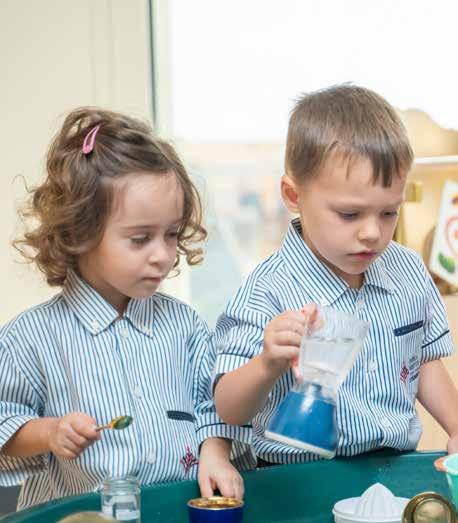
This month, Rose Akachi, head of Early Years at Dubai British School Foundation, talks about ways to encourage your little one to talk about their school day.

October is a busy month in Foundation Stage for children, parents and teachers. It is the settling time, where secure relationships are made, routines are embedded and children begin to develop their independence.
As a parent, it is great to see your child happy and settled in school but it can sometimes be tricky to get information from young children about their day at school. Often when a child is asked what they did at school, a common response is, “I played” – which is great, but limits the conversation.
Here are some suggestions that may help you to start a conversation with your child, encouraging them to talk about their school day.
Use the apps
Most schools and nurseries use apps or programs such as Seesaw and ClassDojo to share photos, videos and updates. Show the photos to your child and talk about what you can
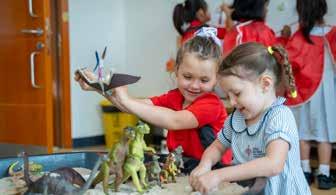

see. For example, try saying, “I can see that you played outside today. What did you make in the sand?” It is much easier for children to recall what they did when they have the video or photo in front of them.
Another way to encourage your child to talk about their day is to ask more direct questions such as, “Who did you eat lunch with today?” or, “What story did you read in class?”. Even more abstract questions like, “ What made you laugh today?” can be great jumping off points for kids to start talking. Modelling some examples of things that you have done in the day may also help your child to talk about their day. Simple references like, “Today, I went to the supermarket to buy some fruit and then I went to the gym” can open a dialogue and get your child thinking back over their own day.
Creating time to talk can lead to more thoughtful discussions. This may be on the journey home from school, during dinner time or in the calm time before bed. Once your child becomes more confident at talking about their day, you could begin to ask more open ended questions, such as, “That’s interesting, tell me more about…”.
These may seem simple, but subtly integrating these three small things can really help little ones in remembering, opening up and verbalising what happened in school each day, allowing you to know more about their experience and keep an eye on how they’re finding school week to week.
In this article, we hear from Dibber International Nurseries on how and why mindfulness should be a part of young learners’ lives.
In today’s fast-paced world, where screens capture much of our attention and schedules are jam-packed, cultivating mindfulness in early childhood has become more essential than ever. Mindfulness, which has its roots in ancient practices, involves being fully aware of the present moment. Introducing mindfulness into early childhood education and home environments can significantly impact children’s emotional health, cognitive growth and overall resilience.
Mindfulness provides children with crucial tools to develop self-confidence, manage stress and handle life’s challenges effectively. Teaching mindfulness to young children helps them improve attention, build confidence, navigate stressful situations and face discomfort with resilience. It involves paying attention to their thoughts, emotions and surroundings without trying to alter or control them. This practice empowers children to manage their emotions and reactions healthily, promoting self-regulation and empathy.
Encouraging children to engage in activities that promote mindfulness will support the development of vital executive functions during their formative years. These functions include concentration, attention, memory retention, task management and appropriate social behaviour. As mindfulness enhances these cognitive skills, it lays the foundation for more

advanced abilities such as problemsolving, planning, developing empathy and fostering positive relationships.
• Helps enhance focus and concentration, improving the ability to stay attentive to tasks and switch between them efficiently
• Encourages thoughtful and strategic responses to challenges
• Boosts the ability to accurately process and retain information
• Develops listening skills and promotes effective verbal and nonverbal communication
• Supports controlled emotional responses to trauma and other experiences, leading to healthier social interactions
• Encourages respect for diverse viewpoints, feelings, and boundaries
• Helps children manage anxiety and stress, promoting relaxation and calmness
• Increases the ability to recognize and understand one’s own emotions
• Reduces excessive worry and anxious thoughts through mindful awareness
• Enhances confidence by promoting a positive self-image and selfacceptance
• Provides strategies for effectively managing emotional highs and lows
• Contributes to a positive life outlook and a higher sense of happiness.
A great starting point for this journey is for adults to practise mindfulness themselves and lead by example. Children learn from their surroundings, especially from their caregivers. By demonstrating awareness and nonjudgment, caregivers can significantly influence their children.
What are some of the ways you can help your little one with mindfulness?
Articulate and label emotions
Young children often struggle to articulate their feelings. Assisting them with language helps them express what they are experiencing in a way that is understandable, fostering an awareness of their internal emotions. This helps children identify and express their feelings better.
Focus on the senses
Instead of introducing mindfulness as an abstract idea, focus on sensory experiences by engaging children in sensory activities. For instance, they might not understand how listening to ocean waves helps them relax, but over time, they can make the connection.
Build awareness of body and mind
When asked how they feel, younger children might respond with “good” or not know at all. You can guide them in checking in with their bodies and minds by having them do a “body scan,”
paying attention to different areas and noting any feelings or sensations they experience.
Dibber International Nurseries highlight the importance of embedding mindfulness into daily classroom activities, rather than using it only in response to anxiety or disruptive behaviour, making it a natural part of the learning environment. This proactive approach prevents negative associations with mindfulness and positions it as a vital life skill that enhances emotional intelligence and overall well-being.
Mindfulness is crucial in early childhood settings, benefiting educators and children by fostering calmness,
emotional regulation, social skills and focus. At Dibber, Engaged Educators practice mindfulness themselves, equipping them to impart these essential skills to young learners and helping them develop a balanced and controlled approach to life.
Based in Norway, Dibber has over 20 years of experience in early childhood education. With more than 600+ schools worldwide, they have expanded their Norwegian roots and Scandinavian curriculum globally, and are poised to make further advancements in the MENA+ region in the coming years.
To know more, visit one of their units in the UAE!
Schedule a tour today by calling: 800-DIBBER or emailing familyrelations@dibber.com.
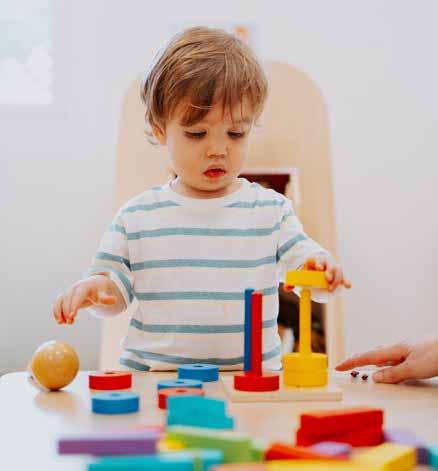

A spa getaway in Fujairah; the UNESCOrecognised island paradise you’ll love; a serene all-villa retreat in Bahrain and more!
The beautiful London address has a brand new offer for all families looking to visit the iconic city between now and March 2025.
This October, Raffles London at The OWO offers travellers the perfect setting for a family getaway. Located in the heart of the English capital, this landmark hotel provides an unparalleled blend of history, luxury and comfort, making it the ideal base for families or couples looking to explore London’s most iconic sites during the half-term break or beyond.
This month, guests booking at least three nights at Raffles London at The OWO will receive a complimentary extra night, allowing ample time to experience the best of the city. The offer is available for stays until March 31st 2025, subject to availability.

Raffles London is an ideal ‘home from home’ for discovering the wonders of Whitehall, London’s royal and then political nerve centre for more than 500 years. The hotel has views of the daily Changing of the Guard, where the cavalry stand at the official gates to Buckingham Palace. Walking across the famous Horse Guards Parade Ground opposite the hotel, one enters the tranquillity of St James’s Park. Here the famous pelicans, a gift from the Russian Ambassador in 1664, can be seen preening on the rocks in the lake.
The hotel is also within walking distance of many of the city’s most notable landmarks such as Big Ben, The London Eye and River Thames, Buckingham Palace, Downing Street, the Churchill War Rooms, Trafalgar Square, The National Gallery and the shops and culture of Covent Garden, Soho and Mayfair.
Housed in one of London’s most storied buildings, which once hosted political and military leaders, Raffles London at The OWO combines rich heritage with contemporary sophistication. The former Old War Office building has undergone a monumental transformation and is home to nine destination restaurants and three bars, as well as 120 rooms of pure luxury. Your family can enjoy world-class amenities, including the 24-hour Raffles Butler Service for suite guests, and a curated selection of dining experiences led by renowned chefs.
For those seeking relaxation, The Guerlain Spa offers a serene escape with its 20-metre pool, sauna and signature treatments. The hotel’s central location ensures easy access to London’s shopping districts, cultural
landmarks and family-friendly attractions, making it the perfect destination for a memorable half-term break for all members of your gang.
Family friendly services include:
• Professional in-room babysitting service from newborn to teenage years
• Cots and roll away beds available on request
• A host of cuddly toys for infants and young children
• Children’s designated swim-times
• With parent's permission, children’s outings around London can be arranged
For reservations or further information, visit https://www.raffles.com/london or contact reservations.london@raffles.com.

We look at the new hotels on our radar in Bahrain for families in search of something different for their next trip.
Bahrain is an archipelago surrounded by shallow, crystal-clear waters, made up of 33 islands. Bursting with culture, history, art, vibrant natural scenery and delicious food, the kingdom invites you and your loved ones for a gorgeous family holiday!
With an influx of fresh, upscale accommodation filled with top-tier experiences, dining and fantastic amenities, here are three hotels that have elevated the island’s already vibrant scene - offering your family even more choice when it comes to embarking on an unforgettable trip.
Located on the waterfront, this 30-story property features 98 suites with floor-
to-ceiling windows, a rooftop pool with a panoramic view of the city, and the globally acclaimed restaurant SushiSamba, where your loved ones can explore the unique blend of Japanese, Brazilian and Peruvian culture on offer. Just minutes from the prestigious shopping districts of The Avenues and City Centre Bahrain, and with Bab Al Bahrain less than a kilometre away, leading to the famous Manama Souq, this hotel is perfectly located for a shot of city hustle and bustle!
Visit www.hilton.com/en/hotels/bahfhciconrad-bahrain-financial-harbour for more.
Hawar Resort by Mantis is a luxury resort located on the west coast of Hawar Island.
Located 30 minutes from Bahrain’s main island, it’s an outstanding destination recognised by UNESCO for its natural history. Its pristine environment has been virtually untouched, resulting in a vibrant ecosystem that will appeal to nature lovers and adventure seekers alike! This environmentally focused project aims to transform the island into an eco-tourism hub, showcasing local wildlife - including sand gazelles, vibrant coral reefs and endangered dugongs.
The resort blends adventure, comfort and sustainability, surrounded by a thriving wildlife sanctuary. It features 102 elegant luxury accommodations, including overwater villas, five incredible dining venues and extensive sports facilities. Here, your family can enjoy a water park, adventure park, the Bear Grylls Survival Academy, Kids Club, a serene spa, pool and a long stretch of gorgeous sandy beachhow perfect does that sound?
Go to www.mantiscollection.com to learn more.
Your secret garden palace in Bahrain, this breathtaking desert paradise offers a serene all-villa retreat, where traditional Middle Eastern design meets stylish contemporary flair. Their 78 spacious and private pool villas offer authentic Arabian hospitality in an atmosphere of refined tranquillity, surrounded by beautiful botanical gardens.
Situated in Zallaq, a modern village on the west coast of Bahrain, the area is known for its rich ecosystems and biodiversity. Al Areen Wildlife Park is on your doorstep, a vibrant home for rare animals, birds and desert plants, and you are within easy reach of the Bahrain International F1 Circuit, the Lost Paradise of Dilmun Water Park, the Al Dana amphitheatre, Al Jazair beach and the Royal Golf Club.
From private treatments and spa rituals, to a candlelit dinner or a tour of the inhouse art collection, your family will have no shortage of wonderful experiences to enjoy here.
Visit www.raffles.com/bahrain/ for more details.
Naäma Beach Villas and Spa is located in Fujairah, and is one of the best spa experiences in the country!


ESPA at Naäma is the crown jewel of this resort’s offering, a true sanctuary away from life’s stresses. Protected by the majestic Hajar Mountains and serenaded by the gentle waves of the Indian Ocean, it invites guests to slow down, restore and reset. This holistic wellbeing retreat in Fujairah offers immersive experiences for the body and mind, combining rich ingredients, indulgent techniques, ancient practices and a touch of science, to deliver a transformative journey towards wholeness.
This exquisitely designed sanctuary spans 1,995 square metres over two floors, embracing an Arabic-inspired opulence that resonates with warmth and intimacy. Dedicated to privacy and wellbeing, the spa features distinct gender separation areas, ensuring utmost tranquillity for female and male guests. Wellness is woven into every detail of the serene interior, which centres around a tranquil reflection pool. Facilities include luxurious treatment rooms, exclusive private suites, a Hammam with separate offerings, and a comprehensive array of heat experiences such as saunas and a steam room, a vitality pool and a cold plunge pool.

The spa also boasts an indoor pool with a relaxation deck, a fully equipped gym, and a studio offering diverse wellness classes. Complementing these amenities are a hairdresser, beauty salon and grooming suite, providing a holistic haven where rejuvenation and indulgence converge seamlessly.
Each of The Autograph Rituals, whether it's the renewing Marine Body Ritual or the uplifting Natural Face Lift, is crafted with the utmost care and attention to detail, ensuring pure indulgence and revitalisation. With the Marine Body Ritual, you are enveloped in the therapeutic benefits of the sea, as gentle exfoliation and a nourishing Marine Algae envelopment work together to restore suppleness and radiance to your skin. Meanwhile, the Natural Face Lift employs cutting-edge technology and agedefying techniques inspired by Japanese Kobido massage, to reveal resilient, youthful skin that leaves you feeling rejuvenated and refreshed.
ESPA also offers an array of body treatments designed to address specific concerns. The Stimulating Hip And Thigh Treatment targets specific areas of the body, working
swiftly and effectively to diminish cellulite, boost circulation and leave your skin looking smooth and toned. Meanwhile, the Mindful Massage and Salt Stone Massage provide a blissful escape from the stresses of everyday life, with guided breathing and therapeutic massage techniques working together to soothe the mind and body, leaving guests feeling centred and rejuvenated.
Complementing these signature rituals are artisan hammam experiences, including the Berber Hammam and Moroccan Hamman, which offer sensory journeys steeped in tradition and regional ingredients, leaving the skin, body and mind revitalised.
For men, ESPA at Naäma offers tailored face and body treatments, such as the Stressbuster and Relax Restore Massage, providing the perfect antidote to stress-related tension and promoting overall wellness.
With its sunrise-facing beach and a plethora of bespoke experiences, Naäma Beach Villas and Spa in Fujairah offers the ultimate luxury for mind, body and soul. MOTHER,
Styling your family’s outdoor space with The Loom Collection and how to create a healthier bedroom for your child!
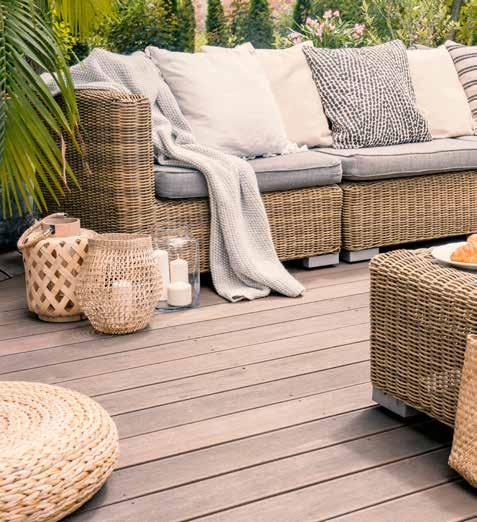
Here are some highlights from The Loom Collection’s latest range of outdoor furniture and accessories, so your family can make the most of your outside space this season.
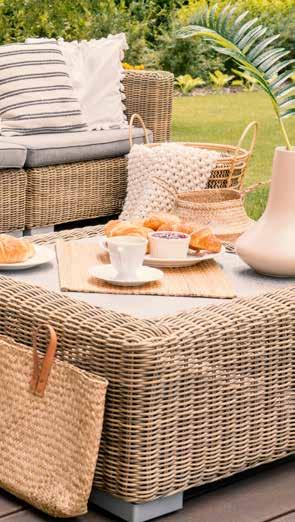
As the UAE gears up for the much-anticipated outdoor season, The Loom Collection has introduced its latest outdoor furniture line, designed to transform our terraces, gardens and patios into luxurious retreats. These new pieces arrive just in time for families and businesses across the Emirates who are looking to revamp their outdoor spaces with style, comfort and sustainability as the season changes.
The Loom Collection continues its legacy of crafting exquisite outdoor furniture that not only withstands the UAE’s unique climate but also complements the sophisticated urban backdrop of the region. With pieces that balance durability with design excellence, the
collection promises to elevate any outdoor setting. Whether your children are young or older, there is something here to suit every family’s needs.
Here are some highlights from the brand’s latest collection:
Embodying luxury and comfort, this sofa (priced at AED 14,490) features plush cushions and a chic colour palette, perfect for upscale outdoor lounging and entertainment.

Redefine outdoor dining with the Kaolin Dining Table, showcasing a stunning Moroccan tadelakt finish reimagined in a modern design. Featuring rounded edges and a sculptural base, this table combines the durability of concrete with the smooth, silky touch of suede. Priced at AED 6,130, its timeless design and robust construction make it a centrepiece for sophisticated outdoor family gatherings.

Vibrant and inviting, this lounge chair combines comfort with durability, featuring a bold colour that adds a pop of style to any outdoor area! Priced at AED 1,450, you don’t want to miss this gorgeous piece.
Inspired by Italian cobblestone streets, the Framenti range features concrete tables with large terrazzo speckles. The coffee table (AED 2,975) has a cylindrical shape and rounded design, making it a durable and stylish addition to any space, while the side table (AED 765) offers a complementary accent piece.
Unleash the elemental beauty of the Vento Firepit! Priced at AED 1,400, it’s perfect for intimate gatherings, inviting you and your loved ones to embrace the power of fire and elevate your outdoor experience.
In addition to these standout furniture pieces, The Loom Collection also offers a variety of outdoor accessories that complement any exterior decor. From eye-catching cushions and stylish planters to outdoor rugs and lighting, these accessories are designed to enhance the ambience and functionality of any outdoor space.
With The Loom Collection’s latest offerings, you will be able to create enchanting outdoor spaces that suit your needs through a variety of uses - from intimate family dinners to larger social gatherings. Each piece in the collection is designed to provide the ultimate in comfort and style, ensuring every moment outdoors is as beautiful as it is memorable.
Discover the full potential of your outdoor spaces with The Loom Collection’s new range, available exclusively at www. theloomcollection.com.
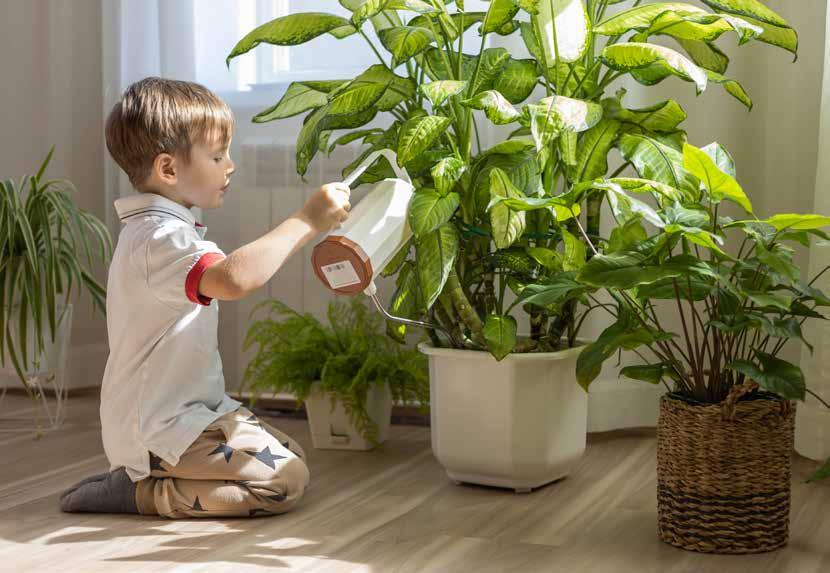
We often think of our bedrooms as sanctuaries - a place to rest, recharge and spend time with our loved ones. But, did you know that hidden toxins and pollutants can sneak into this safe haven and impact your family’s health? From the products you choose to the way you clean, there are many small but impactful ways you can create a healthier, toxin-free environment for your little ones. Let’s explore how you can turn your family’s bedrooms into the ultimate sleep-friendly, health-boosting spaces.
The materials you bring into your child’s bedroom have a significant effect on the air quality and overall safety of the space. For bedding, mattresses and furniture, choose items made from organic cotton, wool or other natural fibres. These materials are free from harmful
chemicals such as pesticides and flame retardants, which are often present in conventional products.
When shopping for furniture, look for solid wood options rather than particleboard or MDF (medium-density fibreboard), which can release formaldehyde - a known irritant that can cause respiratory issues. You can also select non-toxic paints and finishes that are low in volatile organic compounds (VOCs) to further reduce harmful emissions.
Good air quality is essential for restful sleep and overall health, especially for growing children. Consider investing in a high-quality air purifier that can filter out allergens, dust and other pollutants. For an extra boost, add a few air-purifying houseplants to your child’s room. Plants like the spider plant, snake plant or peace
lily naturally cleanse the air and help reduce levels of toxins like formaldehyde and benzene.
Keep in mind, though, that not all plants are safe for children or pets, so choose ones that are non-toxic and easy to maintain. Be sure to avoid overwatering them, as this can lead to mould growth, another common allergen to be wary of.
We all love our homes to smell fresh, but synthetic fragrances found in air fresheners, candles and cleaning products often contain harmful chemicals like phthalates, which can disrupt hormones and trigger allergies. Opt for fragrance-free or naturally scented alternatives made with essential oils. A lavender sachet or diffuser can be a lovely, non-toxic addition that makes the room smell pleasant without compromising your child’s health.
Be wary of products that are labelled as ‘unscented’, as these sometimes contain masking agents to neutralise smells. Always read ingredient labels and choose items that are genuinely free from synthetic fragrances.
The flooring in your child’s bedroom can be a source of hidden toxins as well. Carpets, in particular, can harbour dust mites, allergens and mould if not cleaned properly. Choose hard flooring options like bamboo, cork or natural linoleum, which are both durable and ecofriendly.
If you prefer the softness of a rug or carpet, consider natural wool or cotton alternatives that are untreated and free from synthetic dyes. Regularly vacuum and steam clean carpets to minimise allergens, and ensure proper ventilation in the room to keep the air fresh and clean.
It’s tempting to keep a TV or computer in your child’s room, but electronic devices can emit electromagnetic fields (EMFs) and contribute to poor sleep quality. Research suggests that exposure to blue light from screens can interfere with the body’s production of melatonin, the hormone that regulates sleep.
Set boundaries for screen time, especially before bed, and try to keep electronics like tablets, laptops and gaming devices out of the bedroom. If you do have electronics in your child’s room, consider using a timer to ensure they’re switched off well before bedtime.
Your child’s toys, stuffed animals and accessories can also be sources of harmful chemicals like BPA, lead and phthalates. Choose toys made from natural materials like wood or organic cotton, and look for brands that prioritise non-toxic production methods.
Be cautious with soft plastics and brightly coloured items, as these often contain additives and chemicals that can leach out over time. Checking for certifications like OEKO-TEX or GOTS (Global Organic Textile Standard) can help you make safer choices for your family.
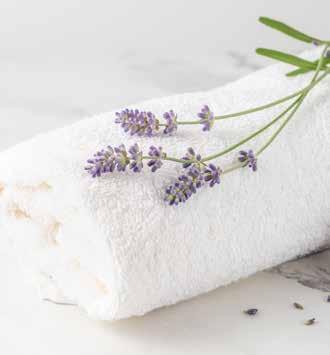
A cluttered bedroom not only contributes to stress but can also become a breeding ground for dust and allergens. Keep your child’s room tidy and organised by removing unnecessary items that collect dust and debris. Regularly clean under beds, along baseboards and in corners to ensure you’re removing hidden allergens.
Simplifying the space with minimal, well-chosen furniture and toys can make a world of difference! It reduces the need for excessive cleaning products, which often contain chemicals, and creates a calming environment that’s more conducive to rest and relaxation.
Finally, your choice of cleaning products matters. Many conventional cleaners contain harsh chemicals that can linger in the air long after use. Opt for natural cleaning products or make your own using ingredients like vinegar, baking soda and water. These alternatives are effective, budget-friendly and most importantly, safe for your little ones.
Creating a toxin-free bedroom for your child may seem like a daunting task, but small changes can have a big impact. Start by focusing on one area, such as replacing bedding or choosing safer cleaning products, and build from there. Each adjustment you make brings your family closer to a healthier home environment. By prioritising the right materials, the air quality and non-toxic products, you’re setting the stage for better sleep, stronger immune systems and a more nurturing place for your child to grow and thrive.
Beauty masterclasses at Nakheel Mall and the Editor’s favourite skincare products this month!

The festival promises to bring all things beauty to the city this month!
These hands-on sessions will cover everything from the latest techniques to makeup transitions on social media, giving you the chance to learn directly from the best in the business. There are eleven classes in total, but my top three are:
Anastasile, the global makeup artist and social media star, is set to steal the show on October 12th by teaching us how to elevate beauty content with flawless transitions and pro-level tips.
I’m so excited for the third edition of Beauty Unbound, set to return to Nakheel Mall, from now until October 20th, featuring immersive beauty pop-ups, lots of gorgeous brands and industry-led masterclasses. If you have a passion for beauty and wellness, this is not to be missed!
Benefit Cosmetics, Fenty Beauty and MAC will be taking over the festival with show-stopping pop-ups that blur the line between product showcases and interactive experiences.
At Benefit Cosmetics on the lower ground floor, you can test your luck with the fun-filled ‘Hook a Tint’ game and pose in front of the dazzling photo wall. This pop-up is a great mix of creativity and play, blending beauty with some light-heartedness!
On the lower ground floor, Fenty Beauty will be bringing its unique vision to life. You'll be able to sip Fenty’s signature hot chocolate, nibble on popcorn or candy of your choice and personalise your makeup bag with mini glosses and charms. Make memories at the 360-photo station, a Fenty-style homage to self-expression and unapologetic fun.
MAC invites you to their Glow Play Wonderland, a vibrant haven on the first floor, featuring makeup stations, a ping-pong table for friends to challenge each other to a fun game and a claw machine filled with exclusive beauty must-haves.
Beauty Unbound offers us a cool opportunity to learn from top industry professionals. As part of the festival, beauty enthusiasts can look forward to a series of exclusive masterclasses led by renowned experts, taking place on the Lower Ground Floor opposite Skin 111 at Nakheel Mall.
You can also head to Apotheca’s workshop on the same day, where you’ll discover the essentials for an effective beauty routine, with tips and tricks from the brand’s experts to curate the perfect ritual for your skin.
For those craving a wellness moment, Dr. Salim from SKIN 111 Clinic will host a transformative session on IV therapy and bespoke aesthetics on the same day. Envision a radiant glow from within… it might just be the future of beauty!
Beauty Unbound will run from 10 am to 10 pm, Sunday to Thursday, and 10 am to midnight on Fridays and Saturdays. The best part - entry to both the festival and masterclasses are free!
To register for the masterclasses, visit www.nakheelmall.ae/en/ beautyunbound or for more information on Beauty Unbound, visit www.nakheelmall.ae.


My beauty picks for October are products from Skeyndor's Eternal Line, which promise potent anti-ageing skincare magic.
As a ‘scientific skincare’ pioneer, Skeyndor feels like a secret that I can’t wait to tell you about! If you’re intrigued by stem cell power and are on the hunt for radiant, youthful skin, this may be exactly what you need. The brand boasts a huge variety of products, from essential care and skin brightening, to the most advanced products for anti-ageing, skin repair and rejuvenation.
Skincare has a reputation for being a bit of a chore and Skeyndor in particular comes with an extra level of sophistication that might seem daunting. However, as well as a host of skin-boosting benefits, a moment spent enjoying their indulgent products is a moment of selfcare, positivity and renewal. It’s such a pleasure!
I was therefore excited to discover the launch of their newest anti-ageing breakthrough - the Eternal Line - an advanced treatment designed to rejuvenate and restore youthful skin by harnessing the regenerative power of stem cells. This professional-grade skincare line allows you to enjoy an anti-ageing treatment from the comfort of your own home.
At the heart of this innovation is the latest biotechnology, offering a scientifically proven solution capable of reversing the cellular ageing process. Harnessing the power of plant stem cells and plant plasma infused with cellular factors, the Eternal Line is more than just skincare - it’s a transformative experience,


designed for those seeking visibly firmer, redensified and younger-looking skin.
Retailing at AED 325, this isn’t ordinary skincare! The Eternal Line uses a comprehensive three-phase approach, addressing the various layers of your skin to stimulate regeneration and reverse signs of ageing:
Liposome-based stem cells from goji berries protects and stimulates various skin tissues, recovering the thickness and elasticity of the deep tissue and contributing to the overall maintenance and rejuvenation of the skin.
Phase 2: Medium Action Concentrate
Plasma rich in cellular factors from Centella Asiatica stops and reverses the senescent effects of the dermis, rejuvenating and regenerating your skin until it glows!
Phase 3: Superficial Layer Concentrate
Enriched with Apple Stem Cell Extract, this concentrate protects and stimulates dermoepidermal stem cells, resulting in a smoother and more unified complexion.

The treatment is completed with a luxurious Peel-Off Mask, enriched with ceramides and plant oils to restore your skin’s barrier, and an Intense Cream, which strengthens cellular cohesion with high-quality collagen for improved firmness.
Clinical studies have shown that the Eternal Line delivers exceptional anti-ageing results, with participants reporting visibly younger, firmer and revitalised skin. Wrinkle depth was reduced by up to 68%, and skin regained its natural glow. Designed to restore and enhance skin’s regenerative powers using potent stem cell technology, this line is ideal for those looking to combat signs of ageing or maintain a youthful complexion.
Now, you can achieve salon-like results at home, with long-lasting, visible improvements that your skin will thank you for!
Available at www.noon.com, www.namshi.com, www.faces.ae and more.

